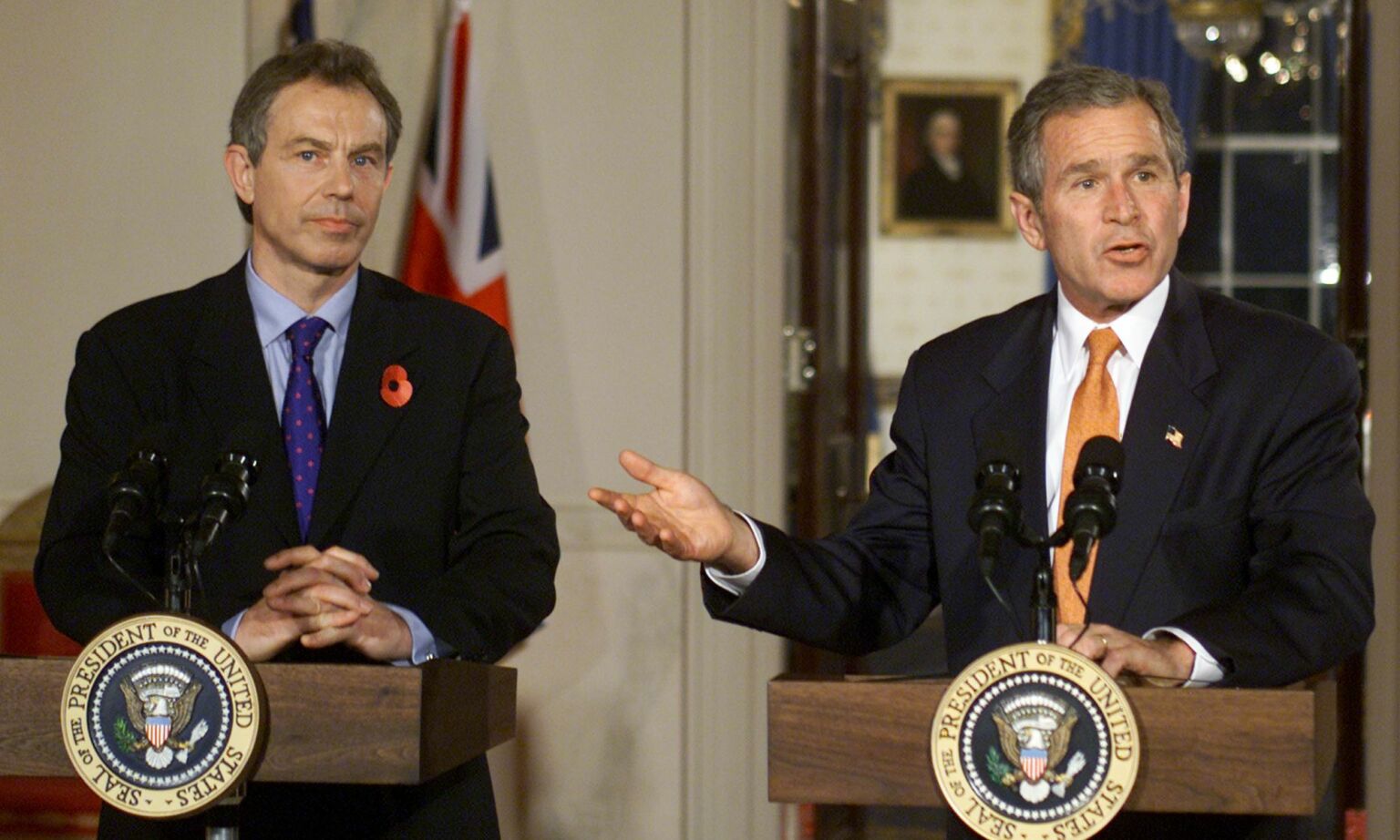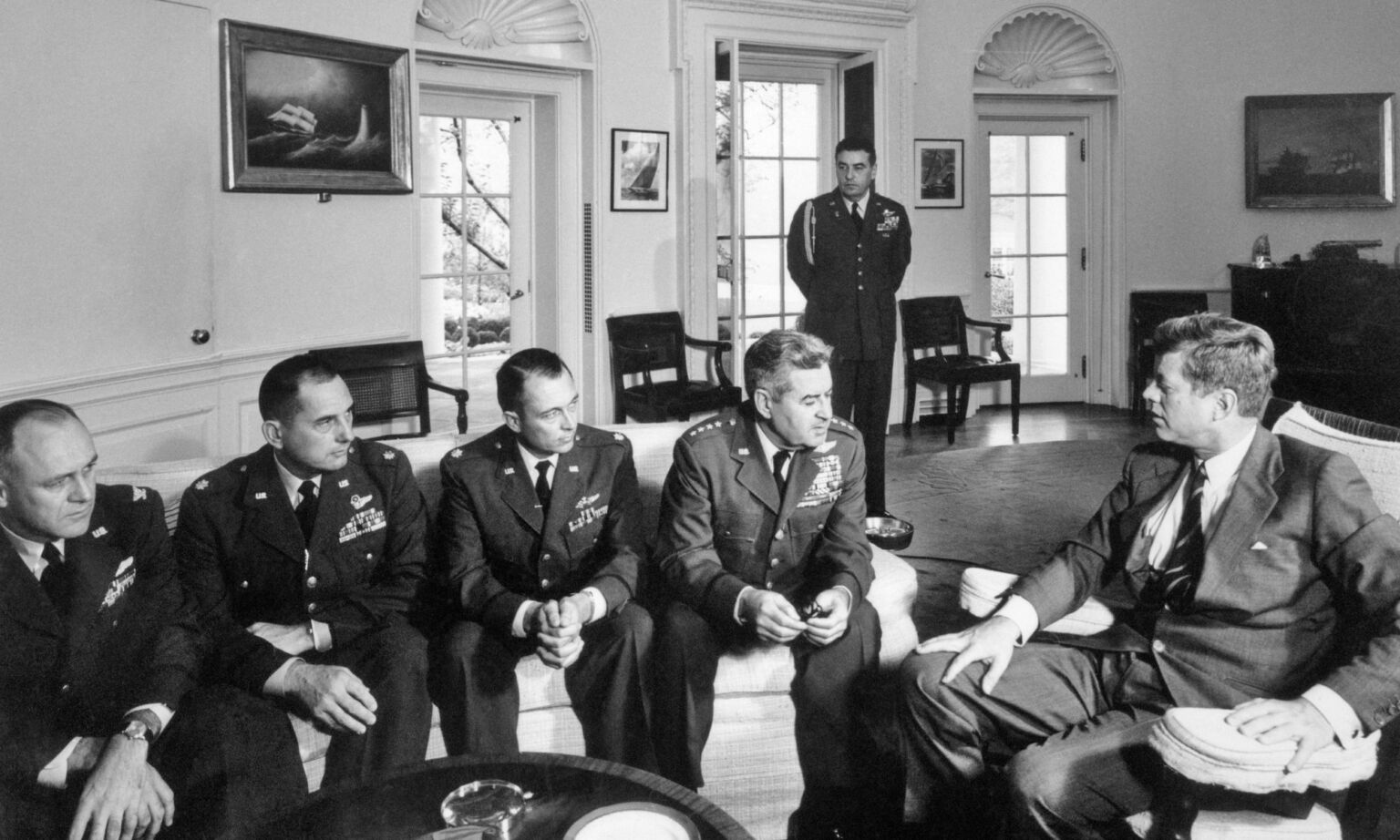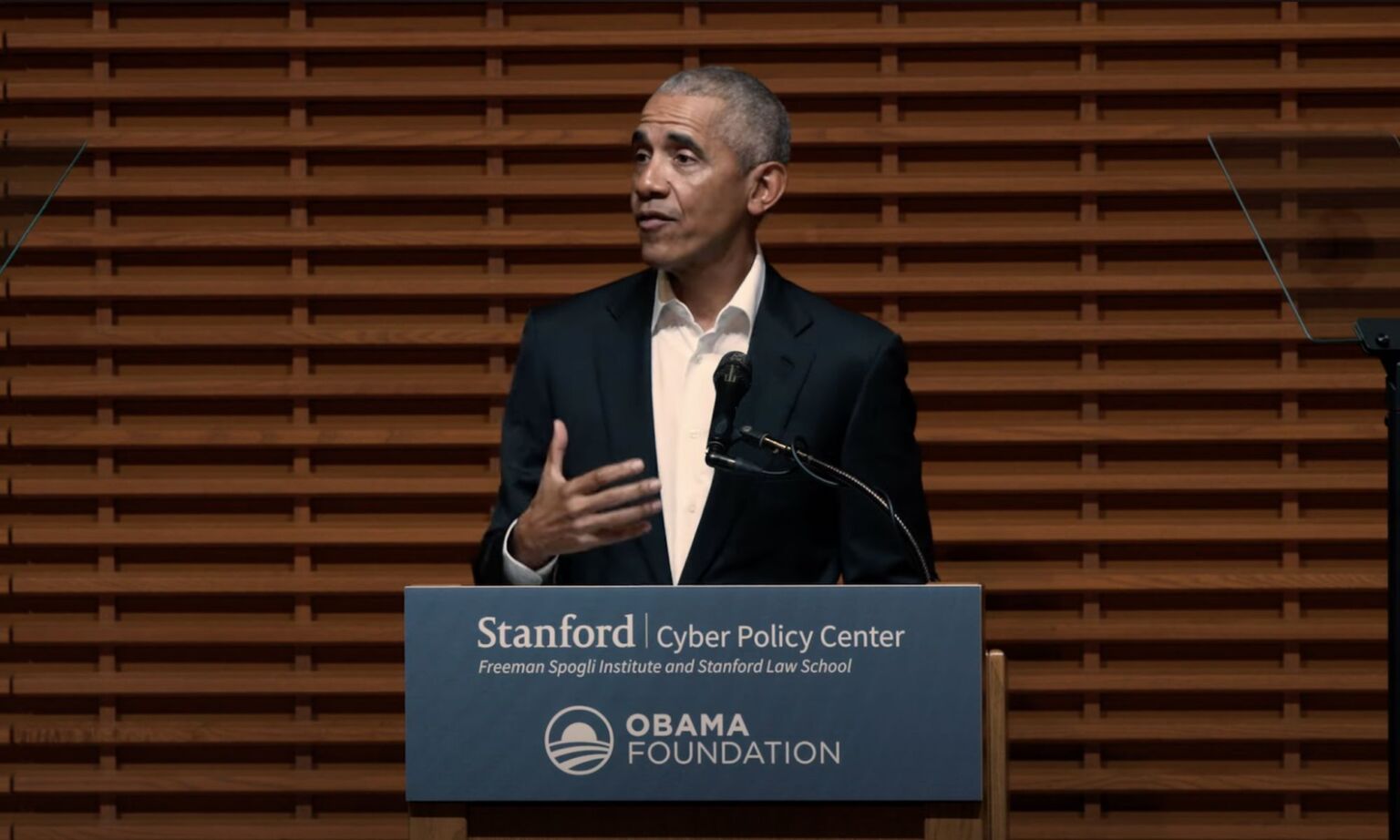
Long-read
The great disinformation panic
The elite crusade against ‘fake news’ is authoritarian, anti-democratic and deeply hypocritical.
Want to read spiked ad-free? Become a spiked supporter.
The transatlantic campaign to stanch ‘misinformation’ burgeoned with the elites’ revulsion at the outcome of the 2016 Brexit referendum in Britain and the election of Donald Trump, also in that year. That campaign has intensified with the prospect of Trump’s re-election in the US and in the wake of the recent riots in the UK, which were sparked by erroneous online reports that the person who fatally stabbed three children in Southport on 29 July was an asylum seeker. In both countries, the right-on, smart take is to embrace, in the name of democracy and social justice, such doublethink as the Labour government’s new enthusiasm for the policing of and crackdown on ‘legal but harmful’ online content.
The muddled nature and pernicious implications of this crusade are laid bare by dissecting what remains among the most widely praised of the establishment’s examinations of the problem of disinformation – a three-day conference in 2022 titled titled ‘Disinformation and the Erosion of Democracy’, co-hosted by the Atlantic and the University of Chicago’s Institute of Politics. Topics of discussion included how and whether to regulate social-media companies, the pernicious influence of deep fakes and algorithms, the dangerous allure of conspiracy theories, national security, Russia, the storming of the Capitol on 6 January 2021, and the implications of all this for free speech.
Guest speakers included such politicians as US senator Amy Klobuchar, representatives Adam Kinzinger and Lauren Underwood, and former president Barack Obama – who, to judge from his remarks at the conference and in his subsequent speech at Stanford titled ‘Disinformation is a threat to our democracy’, is particularly taken with this issue. Joining them were an assortment of academics, authors, journalists, activists, intelligence veterans, computer scientists and others. Save for one speaker on stage, the moderators and guests sheepishly avoided the central dilemma that the conference seemed to raise – that is, how to tackle disinformation without destroying democracy.
Panellist after panellist, in session after session, highlighted with confidence the many and varied problems surrounding misinformation, disinformation and the ungoverned dissemination of information in general in the internet age. Many asserted and agreed that the problem now posed by disinformation is unprecedented. Many also asserted and agreed that owing to this unprecedented problem, American democracy is facing its greatest ever existential threat. But few dared to do much more than gesture toward solutions – likely because the solutions anyone could conceive of would erode democracy more (and more quickly) than the supposed problem itself.
Examples of free speech gone wrong abounded, as did examples of free and open media platforms being put to nefarious purposes. In a conversation with the political consultant David Axelrod about current acts of Russian disinformation, journalist and historian Anne Applebaum talked of how even the old USSR disseminated disinformation by cleverly seeding and laundering it through a free and open Western press. Neither she nor Axelrod thought to note that this was essentially the same method used by the George W Bush administration to gain credibility for the Iraq weapons-of-mass-destruction story in 2002 and 2003. By having proxies seed it anonymously in the New York Times, with the help of a cooperative journalist, the Bush administration could then cite the New York Times as a credible and independent entity corroborating what was (of course) nothing more than its own seeded talking point. The consequences of this well-placed, effectively laundered misinformation (if not disinformation) were hardly insignificant. Years of war, human misery and damage to the credibility of both the Times and the country ensued.

Ironically, one of the hosts of the conference, the Atlantic’s editor in chief, Jeffrey Goldberg, has himself stood accused of trafficking in Iraq misinformation, for reporting he had conducted as a New Yorker staff writer in the lead-up to the 2003 invasion. That reporting, his critics have credibly demonstrated, amounted to little more than stenographically recording fabrications regarding links between al-Qaeda and Saddam Hussein. Goldberg’s articles containing those fabrications were essential evidence in George W Bush and Dick Cheney’s case for war against Iraq.
Goldberg wasn’t the only promulgator of disinformation at this particular disinformation conference. As a Washington Post reporter in December 2002, Barton Gellman, one of the conference’s moderators and an Atlantic contributor, erroneously contended that Iraq had supplied al-Qaeda with a nerve agent. Most of the evidence for that false claim had been fed to Gellman by Bush-administration officials. Gellman’s story was so thin that it elicited the criticism of the Post’s own ombudsman. Disinformation like that peddled by the Bush administration and parrotted by Gellman encouraged Congress and the public to support a war built on falsehoods and exaggerations.
The push for that war, of course, was not the first instance of American hawkishness relying on a compliant press in order to rally public opinion around dubious if not outright concocted assertions. Think of the Gulf of Tonkin incident in 1964 and of the sinking of the Maine in 1898, which – respectively – helped catalyse America’s entry into the Vietnam War and the Spanish-American War. (The Gilded Age form of dis- / misinformation called ‘Yellow journalism’, the US State Department’s Office of the Historian helpfully reminds us, was ‘a style of newspaper reporting that emphasised sensationalism over facts’. It ‘helped push the US and Spain into war in Cuba and the Philippines, leading to the acquisition of overseas territory by the US.’)
Indeed, much of American foreign policy since the 1890s can be seen as built on disinformation, whether one views those policies as wise or foolish, prudent or dangerous. After all, Woodrow Wilson rallied Americans to support the US intervention in the First World War through a mixture of distortions, specious slogans and the ruthless crushing of dissent. FDR, though he claimed to embrace the neutrality that a great majority of Americans favoured, in fact surreptitiously sought, long before Pearl Harbor, to manoeuvre the US into the Second World War, through a series of initiatives that he hid from and mischaracterised to the American people. After the war, the Truman administration followed Senator Arthur Vandenberg’s advice to Secretary of State Dean Acheson to ‘scare hell out of the American people’ by, in Acheson’s words, painting a picture ‘clearer than the truth’ regarding the Soviet menace. All in order to win public support for enormous defence increases and for the new and sweeping global role the administration perceived to be in America’s interest.
In the 1960 presidential election, John F Kennedy cynically attacked Richard Nixon from the right, by misleadingly claiming that the Eisenhower-Nixon administration had allowed a dangerous ‘missile gap’ to grow in the USSR’s favour. In fact, just as Eisenhower and Nixon had asserted – and just as the classified briefings that Kennedy received as a presidential candidate indicated – the missile gap, and the nuclear balance generally, was overwhelmingly to America’s advantage. And as the Pentagon Papers abundantly revealed, from the first deployment of American advisers through the beginning of the bombing campaign against North Vietnam to the decision to deploy ground troops and the subsequent ramp-up of the ground war, the American government and national-security bureaucracy consistently misled Congress and the American public about the prospect of ‘success’ in the Vietnam War and the blood and treasure that the war would demand.

In short, the threat and the woeful consequences of disinformation are hardly unprecedented, and the wily Russians need not even be involved. The US is perfectly capable of finding itself the victim of homegrown misinformation and disinformation campaigns.
The irony revealed in this chronicle is heavy: not only has the US government regularly issued disinformation, but those dissenters and sceptics who rightly questioned or disputed the government’s dissembling orthodoxy would themselves, according to today’s anti-disinformation crusaders, be charged with spreading disinformation and misinformation. This is because their views and arguments departed from the views and version of events certified by officials, experts and the establishment press.
Less dramatic but still significant examples abound. The Hunter Biden laptop story – now acknowledged to be true by even the New York Times and the Washington Post – was loftily declared disinformation by the prominent social-media platforms (which barred postings asserting its veracity) and by nearly all of the establishment press (which disdained even covering it), including, of course, the Times and the Post. It was dismissed as almost certainly Russian disinformation by 50 former high-ranking intelligence officials. Was the insistence on its inauthenticity itself a bit of disinformation – or at least politically motivated misinformation? Ditto the Covid lab-leak theory, which was treated peremptorily as disinformation until, with the change of presidential administrations, it wasn’t – which makes the original take seem politically motivated and therefore of dubious truth and intention. It seems the word ‘disinformation’ is too often used to refer merely to disputed information, making its use, at least in some cases, a bien-pensant version of Donald Trump’s shouting of ‘Fake news!’.
One of the most consequential, recent acts of homegrown disinformation is the Russia-collusion story (aka Russiagate), which claimed Russia worked with Trump to help him win the 2016 Presidential Election. This story grew out of Democratic opposition research involving a suspect source feeding bogus testimony to the FBI leading to widespread, long-running investigations into the legitimacy of Trump’s presidency. Talk about eroding democracy. Faith in the integrity of America’s electoral and party system suffered a tremendous blow because of many people’s eagerness to believe this tale of Moscow’s interference. The odd combination of pessimism and credulity that swept much of the country during the Trump presidency was only shared and amplified by our leading media outlets. One could have a three-day symposium on the tawdry Russia-collusion story alone, yet it is barely mentioned by those now claiming to be concerned by the threat of disinformation today.
Seeing what ails us as no less a technical than a sentimental problem, those currently concerned about disinformation claim that the pace with which it can now be disseminated via the internet and social media is in and of itself an unprecedented threat to social order, as is the profusion of potential disseminators. Again, it seems not to occur to those making this argument that much the same thing was said about the introduction of the printing press… in the 15th century. Within decades of that invention, print shops were set up in hundreds of European cities, and the output of printed materials rose exponentially. Not all of those materials, of course, were congenial to the then-prevailing social, religious and political orders. The advent of movable type radically democratised and diversified knowledge and learning, and shifted the planes of power. As the Yale historian Carlos MN Eire has put it, ‘No printing press, no Reformation’. Of course, no Reformation, no Counter-Reformation, and no wars of religion that racked Europe for more than a century, claiming the lives of millions.
The pace of it all, in relative terms, was no less ‘problematic’, as we now like to say, than it is today. But there’s a reason why ‘medieval’ (as in, the period ending in the 15th century) is typically used as a pejorative and why ‘Renaissance’ (as in, the period beginning in the 15th century) has a much more favourable connotation. It’s also why, even though bad ideas have been spread as surely as good by way of print, we consider book burning to be the very symbol of arch-reaction. It’s not just the destruction of the objects themselves; it’s the attempted suppression of what those objects contain: disfavoured ideas and thoughts, free speech both expressed and received.

The ‘problematic’ relationship between media diffusion and political instability – a ‘problem’ that President Obama has warmed to, as is evident in his speech at Stanford – has prior examples in American as well as European history. To give just one: the number of newspapers (many of them openly, politically partisan) in the US increased by 500 per cent between 1776 and 1800, a period that partly coincided with vicious political factionalism between the Federalists and the Republicans, each of which sincerely thought the other was going to destroy the young country. The former accused the latter of being Jacobins, part of a mobocracy intent on undermining the nation’s fragile institutions. The latter accused the former of being secret monarchists and genuine elitists bent on betraying the very cause of the American Revolution. Each faction freely indulged in misleading characterisations and outright falsehoods in castigating the other. In this atmosphere of partisan-induced political collapse, and with the excesses of the French Revolution roiling in the background and causing further alarm (at least among Federalists), John Adams signed the notorious Sedition Act in 1798. Its aim was to clamp down on anti-government ‘disinformation’ that Adams and other Federalists felt was eroding democracy.
Returning to the technical theme, today’s opponents of disinformation warn that social-media algorithms stoke division by giving us… more of what we want. And what many of us want, apparently, is division. If you like videos of cats chasing laser dots, Facebook gives you more of that. And if you like historical photographs of your favourite city, Facebook gives you more of that. But if you like being outraged over certain politicians or public figures, certain political parties or movements, certain subcultures and social trends, Facebook gives you more of that. In the last case, addiction to outrage ensues, leading to a host of political, social and cultural pathologies.
No doubt this is what the algorithms do. But are we to treat information like a controlled substance and social-media companies like drug traffickers? Do we need a war on information akin to the war on drugs, to somehow manage the supply in order to save us from our own insalubrious broadband appetites? Whom would we entrust with that task – coders at the selfsame social-media companies who devised the algorithms in the first place? Government regulators? How could we, as an admittedly divided society, even agree on which official or which entity is trustworthy and impartial enough to be deputised with this task? Or would any attempt look to one side like a regulatory power play being perpetrated by the other side, and therefore be a cause of further division?
Quis custodiet ipsos custodes? – who will watch the watchers? The dilemma is older than, well, the Ancient Romans.
Some talk endlessly of holding social-media companies accountable on grounds of product liability. The companies’ products cause ‘harm’, this argument goes, therefore the companies should be held liable, just like any company that puts a harmful or defective product on the market. But who gets to define harm, and therefore liability? Who gets to define defective, and by what standard? Such questions instantly return us to the beginning. Assuming we can even agree that there is a problem, who would be tasked with defining it, regulating it, punishing it? Whom would we trust to do so? Is there anyone – any entity – that we (in our patently divided state) could possibly agree on? Most important, who could even do so within the bounds of longstanding, even foundational legal principles? As Justice Robert Jackson wrote in the majority opinion in West Virginia State Board of Education v Barnette: ‘If there is any fixed star in our constitutional constellation, it is that no official, high or petty, can prescribe what shall be orthodox in politics… or other matters of opinion.’
At that conference in 2022, speaker after speaker, in session after session, ran up against this dilemma and stopped. We should do something, they all seemed to say. But what that something was, no one could say with boldness or precision, beyond suggesting some fairly minor technical and / or regulatory adjustments along the margins.
Alone among the speakers that day, University of Chicago law professor Geoffrey Stone ventured courageously into the heart of the dilemma:
‘I think it’s important to understand why the Supreme Court has been so sceptical about allowing organisations or individuals to be held accountable for disinformation or misinformation, except in very narrow circumstances like perjury and fraud and defamation of an individual. When you’re talking about public speech, what the court has been quite concerned about is, Do you trust the government to decide whom to prosecute?’
Lest the implication be lost on modern-day liberals pondering whether free speech is an outdated nicety that could no longer be safely afforded in full, Stone went on:
‘So imagine the Trump administration having the authority to decide what is false on social media. Do you want to give them the power to make that decision?… And so one of the fundamental insights that the court has had is that of course truly false speech is damaging in lots of ways. But if we give the government the power to decide which speech – or which false speech – to prosecute, then we run an enormous risk of them completely restructuring public discourse, and allowing the false speech they like, and disallowing the false speech they don’t like… So a lot of the reluctance to go down this road is the fear that if you do this, if you allow a politician who makes a false statement in running for re-election to be prosecuted for making a false statement, the government’s going to decide whom to prosecute. And they’re not going to prosecute candidates in their party. They’re only going to prosecute candidates on the other side. So that’s part of the reason why the court has been so reluctant to go down this road – because they see an enormous danger from it that ultimately could threaten democracy in an even more serious way than what we have now.’
At the conference, more than one speaker brought up Justice Louis Brandeis’s famous argument that the best remedy for bad speech is more and better speech. Not to affirm it, but to claim that it had been rendered quaint and inoperative by a high-speed info-sphere in which bad ideas can flourish and succeed. (Examples given included Stop the Steal conspiracy theories about the 2020 election and vaccine scepticism.) The speakers seemed to think that bad ideas had never flourished and succeeded in open societies in the pre-internet age; that Brandeis, writing from what they viewed as the leisurely and harmonious days of yore, had implied that more and better speech would always, ultimately carry the day; and that since it doesn’t always carry the day in the hurly-burly of contemporary social-media environments, the idea needs to be reconsidered and probably scrapped. Brandeis, in this view, had never had to grapple with such consequential matters as those being discussed by liberals today. The presumption itself was rather quaint.
Those who share this view seem unaware that somewhat before the age of social-media platforms – in 1710, in fact – Jonathan Swift identified the problem of the rapid pace with which mis- / dis- / malinformation is promulgated, the very problem they so bewailed: ‘Falsehood flies, and the Truth comes limping after it.’ Throughout the 18th and 19th centuries, variations on Swift’s complaint (including that folksy maxim misattributed to Mark Twain, ‘a lie can travel halfway around the world while the truth is putting on its shoes’) were remarkably plentiful. This would seem to demonstrate that the high speed at which falsehoods and misinformation can travel is hardly a novel problem.
In any case, here, at some length, is what Brandeis wrote nearly a hundred years ago in his concurring opinion in Whitney v California:
‘Those who won our independence believed that the final end of the state was to make men free to develop their faculties, and that in its government the deliberative forces should prevail over the arbitrary. They valued liberty both as an end and as a means. They believed liberty to be the secret of happiness and courage to be the secret of liberty. They believed that freedom to think as you will and to speak as you think are means indispensable to the discovery and spread of political truth; that without free speech and assembly discussion would be futile; that with them, discussion affords ordinarily adequate protection against the dissemination of noxious doctrine; that the greatest menace to freedom is an inert people; that public discussion is a political duty; and that this should be a fundamental principle of the American government. They recognised the risks to which all human institutions are subject. But they knew that order cannot be secured merely through fear of punishment for its infraction; that it is hazardous to discourage thought, hope and imagination; that fear breeds repression; that repression breeds hate; that hate menaces stable government; that the path of safety lies in the opportunity to discuss freely supposed grievances and proposed remedies; and that the fitting remedy for evil counsels is good ones…
‘Those who won our independence by revolution were not cowards. They did not fear political change. They did not exalt order at the cost of liberty. To courageous, self-reliant men, with confidence in the power of free and fearless reasoning applied through the processes of popular government, no danger flowing from speech can be deemed clear and present, unless the incidence of the evil apprehended is so imminent that it may befall before there is opportunity for full discussion. If there be time to expose through discussion the falsehood and fallacies, to avert the evil by the processes of education, the remedy to be applied is more speech, not enforced silence. Only an emergency can justify repression. Such must be the rule if authority is to be reconciled with freedom.’
A ‘fitting remedy’, as Brandeis well knew, isn’t always guaranteed to work, but that doesn’t make it any less fitting. If it did always work, there’d hardly be occasion for remedy. But in matters of public debate and dispute, the pursuit of technical or regulatory shortcuts for managing speech can be far more damaging – far more destabilising – to the overall national health than the ‘evil counsels’ those shortcuts aim to eliminate.
The problems raised in the contemporary discussions of disinformation are hardly as unprecedented as many now claim; nor, of course, is the consequent temptation to consider trading liberty for order – or orthodoxy – in the face of unsettling change. But to make such a trade would be to erode democracy in the name of shoring it up, to declare the demos too cussed and corrupted – too misinformed – to be entrusted with the political system that bears their name.
Benjamin Schwarz is the former national and literary editor of the Atlantic.
Jon Zobenica is a writer, editor and senior fellow at the US Free Speech Union, and former senior editor at the Atlantic.
Main picture by: Getty.
Second picture by: Getty.
Third picture by: Getty
Fourth picture by: YouTube.
Celebrate 25 years of spiked!
A media ecosystem dominated by a handful of billionaire owners, bad actors spreading disinformation online and the rich and powerful trying to stop us publishing stories. But we have you on our side. help to fund our journalism and those who choose All-access digital enjoy exclusive extras:
- Unlimited articles in our app and ad-free reading on all devices
- Exclusive newsletter and far fewer asks for support
- Full access to the Guardian Feast app
If you can, please support us on a monthly basis and make a big impact in support of open, independent journalism. Thank you.





Comments
Want to join the conversation?
Only spiked supporters and patrons, who donate regularly to us, can comment on our articles.